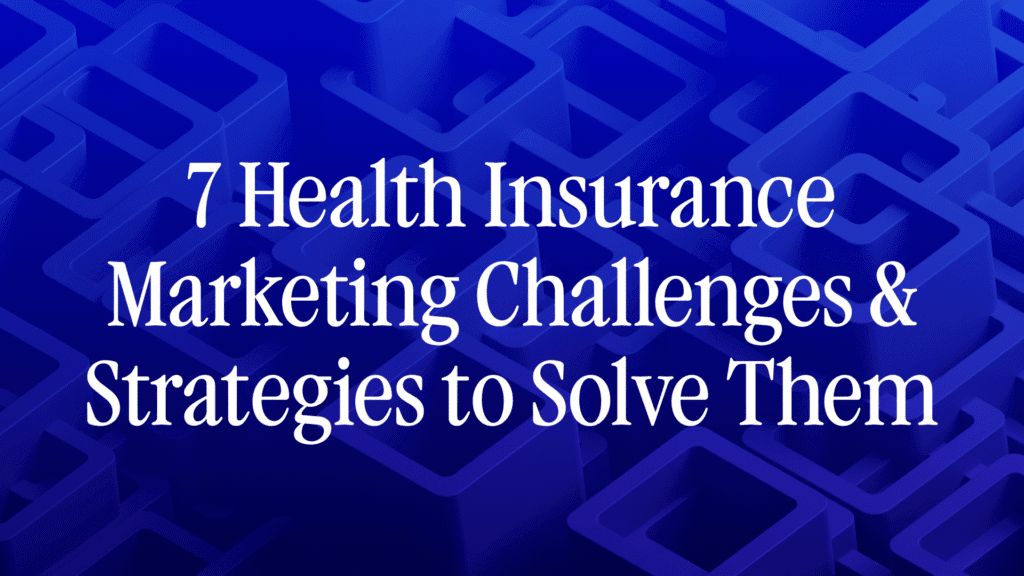Marketing for health insurance brands isn’t for the faint of heart. You’re facing constant external headwinds and internal roadblocks, armed only with your creativity and storytelling chops.
We know this because at Opal, we work with leading health insurers like UnitedHealth Group, Elevance Health, and Optum. We’ve seen firsthand how the best marketers in this space navigate the friction, align their teams, and still find ways to tell the kinds of human stories that make people care — and how they use Opal to do it.
Here are the 7 challenges that must be solved to thrive in today’s health insurance landscape:
- Negative Industry Perception
- Comparable Product Lines
- People Don’t Want to Think About Health Insurance
- Brand Similarity (The Sea of Sameness)
- Reviews & Red Tape
- Complex Internal Structures
- Vastly Different Departmental Goals
1. Negative Industry Perception
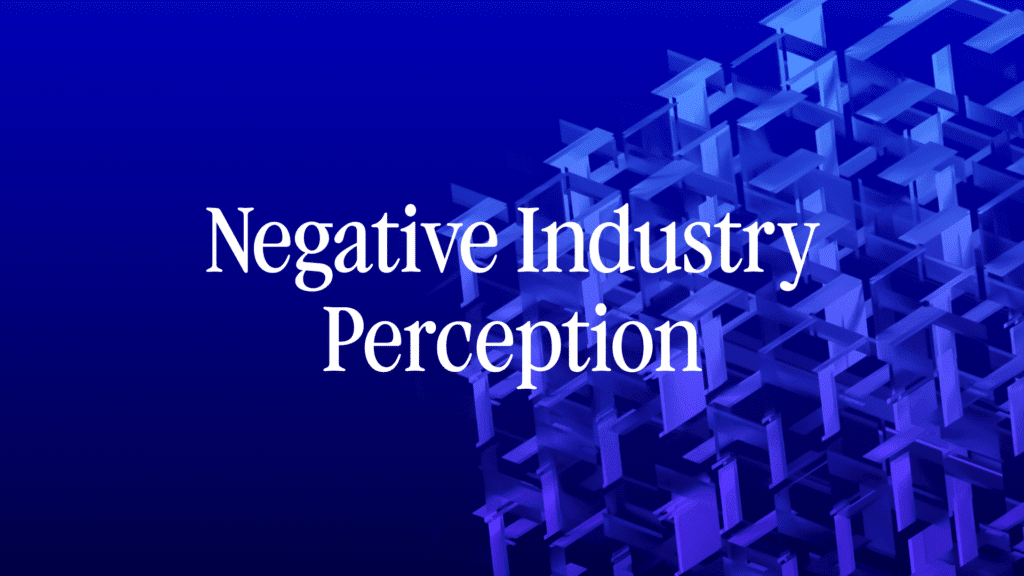
Synopsis: One of the most obvious and most pressing challenges for insurance marketing and comms. Anecdotally, posting on social media as a health insurance brand without getting negative comments is challenging. Statistically, Forrester research showed that Health Insurance is one of the least trusted industries across the board. Given that marketing exists to win hearts and minds, these are headwinds to nearly every channel you attempt to leverage.
Strategy: Certainly, no piece of marketing can change industry-wide perception. However, that’s not your goal. Your goal is to simply elevate your brand’s perception above the overwhelming morass of negativity. Primarily, you achieve this by leveraging marketing to tell the stories that highlight your brand in a positive light. Highlight the real human stories of people having positive health journeys – leveraging their insurance. Provide real education that improves their experience utilizing it. This brand strategy has already been leveraged by several leading brands as an attempt to circumvent this noted insurance marketing challenge.
2. Comparable Product Lines
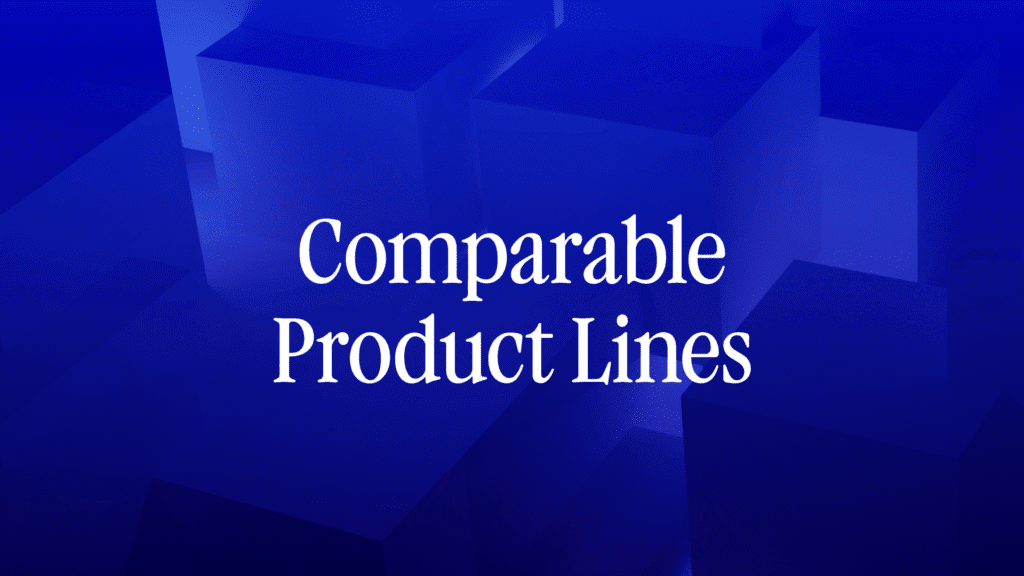
Synopsis: Another major challenge for health insurance marketers is that, at a product level, there’s very little room to stand out. Federal and state regulations dictate what must be covered by health plans, and as a result, most large insurers offer near-identical products. This regulatory uniformity makes it difficult to build differentiation on features or benefits alone. To the outside world, every insurer’s offerings seem like variations on the same theme – a reality that feeds the broader perception that all insurance brands are interchangeable. In this environment, traditional product marketing struggles to gain traction, because there’s simply not enough daylight between one plan and another to create a memorable impression.
Strategy: If your product can’t set you apart, your brand must. To overcome the sameness of product lines, leading insurers are shifting focus from what they sell to how they show up:
- Elevate brand values and purpose to become the emotional tie that competitors lack.
- Tell stories about your people and your impact – not just your products. Highlight the teams, partners, and innovations that shape the member experience behind the scenes.
- Consistently reinforce your unique brand voice across every channel and every interaction, so members can recognize you even when the products look similar.
This is where marketing can become a force multiplier. When every plan looks the same on paper, the way you communicate becomes the differentiator. By leaning on brand storytelling rather than product specs, you can carve out mental space in an otherwise undifferentiated market.
3. People Tune Out Health Insurance Marketing

Synopsis: One of the most fundamental challenges in marketing health insurance is that people would rather not think about it at all. Unlike most consumer categories, where marketing can spark excitement, aspiration, or desire, health insurance is tied to stressful, high-stakes life moments: illness, injury, bills, and bureaucracy. Thinking about insurance often means thinking about something going wrong. As a result, people push it out of mind. They spend less time considering their health insurance than almost any other major purchase – less than choosing a phone plan, a car, or even a streaming service. For marketers, this presents a unique challenge: you’re not just trying to stand out in a crowded market – you’re trying to break through an emotional barrier of avoidance.
Strategy: To overcome this inertia, marketing must shift from being a reminder of risk to being a signal of reassurance. That means:
- Reducing cognitive load with simple, clear messaging that doesn’t feel like a chore to absorb.
- Infusing communications with empathy so they feel human, not transactional.
- Framing insurance as an enabler, not a burden – emphasizing how it supports life’s positive moments rather than just protecting against the negative.
When people feel safe and understood, they’re more willing to let your brand into their mental space. And in a category where most consumers are eager to look away, even a small moment of genuine attention is a meaningful win.
4. Brand Similarity AKA the Sea of Sameness
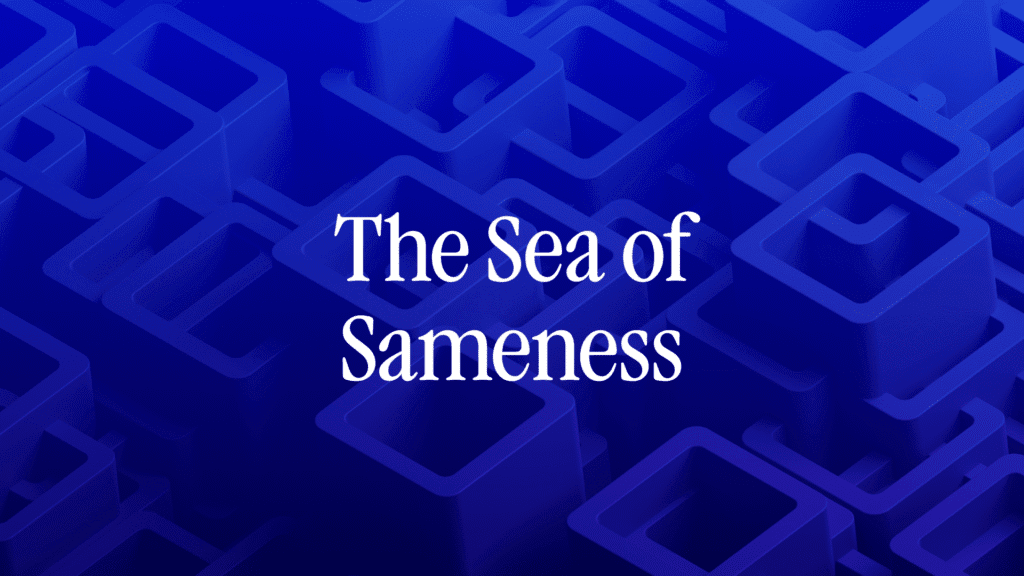
Synopsis: Even when they do break through the noise, most health insurance brands face a sobering reality: they all look and sound the same.
Decades of operating under heavy regulation have flattened the space. With plan structures, benefits, and coverage standardized by law, there’s little room to differentiate on product. Over time, this has shaped how brands present themselves too – similar color palettes, conservative design systems, and cautious, generic language dominate the category.
For consumers, this creates what many industry experts call a “sea of sameness.” Most people struggle to name clear differences between major insurers, and few can articulate why they should choose one brand over another. This lack of distinctiveness makes it hard for even great marketing to stick, because it blends into an indistinguishable background.
Strategy: If your product can’t make you stand out, your brand expression must.
To rise above the sameness, leading insurers are shifting their focus from selling what they offer to showing who they are:
- Define a unique brand point of view rooted in clear values and a compelling purpose beyond policies and premiums.
- Express your brand with bold, recognizable creative – distinctive voice, visuals, and tone that stand apart from category conventions.
- Tell consistent, unified stories across every channel so your audience develops familiarity and recognition over time.
Differentiation in this space doesn’t come from what you sell. It comes from how you show up. By presenting a clear, cohesive, and human brand identity, you create mental space in a market where most competitors blur together.
5. Reviews & Red Tape
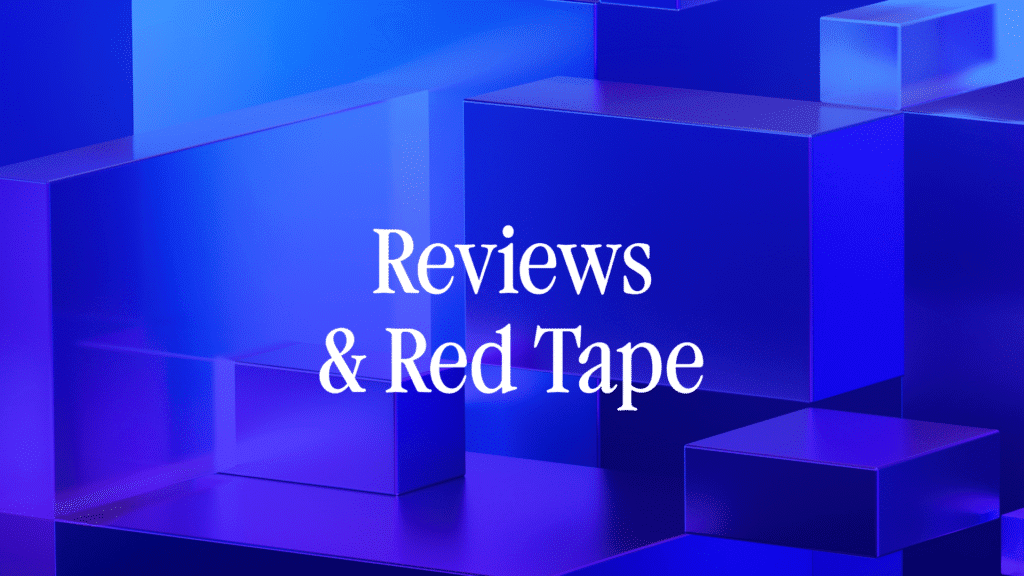
Even when marketing teams at large health insurers have great ideas, getting those ideas out into the world can feel like trying to sprint through quicksand.
Because the industry is so heavily regulated, every single piece of content must pass through multiple layers of review – legal for accuracy, medical affairs for clinical claims, and sometimes additional oversight from Medicare or Medicaid compliance teams. Each round often involves long email chains, calendar-juggling for review meetings, and conflicting feedback from stakeholders with different priorities.
The result? Weeks of delay for even minor updates. Campaigns slow to a crawl. And for many marketers, the relationship with compliance feels adversarial rather than collaborative – which is why roughly 80% of health insurance marketers say the review process is their single biggest bottleneck.
Strategy: There’s no way to remove regulatory oversight – and there shouldn’t be. But it’s possible to make it less painful, less fragmented, and far more efficient by rethinking how reviews are managed:
- Centralize review workflows in a single shared environment so legal, medical, and marketing can work from the same source of truth.
- Increase visibility across teams so reviewers see content in context – how it fits into the broader campaign – reducing confusion and redundant comments.
- Build predictable, repeatable approval paths so no one has to reinvent the process every time.
When review steps are connected and streamlined, they stop being a barrier to creative work – and start becoming a built-in, reliable part of the creative engine. That’s how leading insurers are reclaiming speed without sacrificing accuracy or compliance.
6. Complex Internal Structures

Synopsis: Even if you streamline reviews, there’s another obstacle that slows health insurance marketing to a crawl: the sheer complexity of the organizations themselves.
Enterprise insurers are massive, and their marketing and communications functions are split across a maze of overlapping teams – subject matter groups for different product lines, regional teams representing different states, channel-specific teams for social or web, and in-house creative teams that serve them all. On top of that, there are often separate comms teams posting similar content to similar audiences.
This structure creates deep silos and blurred ownership. Each team has its own priorities, workflows, and even brand interpretations. It’s common for teams to duplicate work without realizing it or to launch disjointed campaigns that compete for the same audience’s attention.
The result is a familiar frustration for many marketers: no one can see the whole picture. Coordinating across teams becomes slow and confusing, and building a cohesive brand presence feels nearly impossible.
Strategy: Fixing this isn’t about reorganizing entire org charts – it’s about creating shared visibility and alignment across them:
- Give every team a clear view of the broader marketing calendar so they can see where their work fits within the larger story.
- Establish a central source of truth for campaign plans, briefs, and assets, reducing duplication and misalignment.
- Encourage cross-functional collaboration early in the process so teams can align on messaging and timing before production begins.
When teams can finally see each other’s work – and how their own work fits into the whole – the complexity stops being a barrier and starts becoming a strength. Large, distributed organizations can move with the clarity and cohesion of a single, unified brand.
7. Vastly Different Departmental Goals
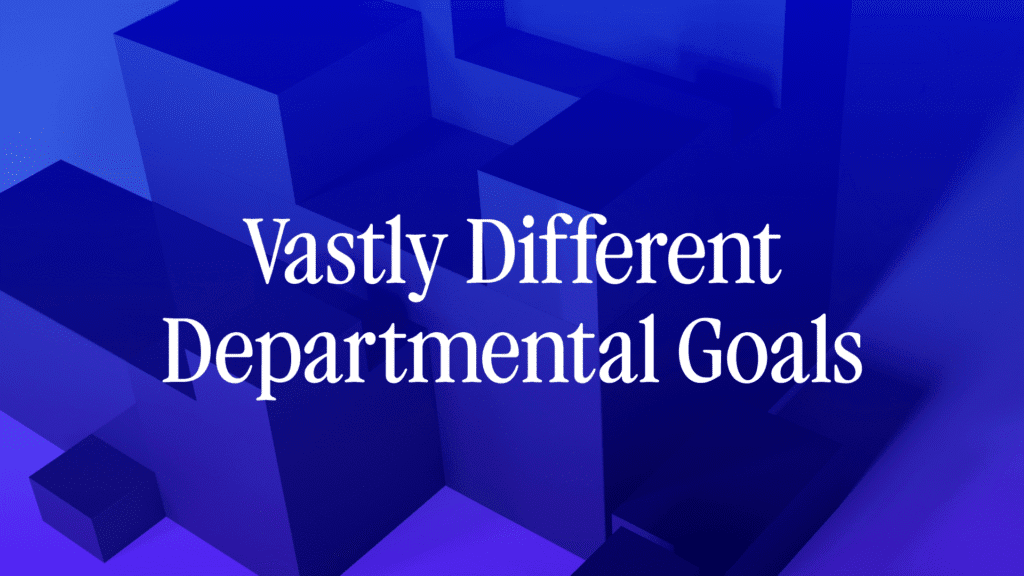
Synopsis: Even when teams are aware of each other’s work, conflicting priorities can still pull them in opposite directions.
Large health insurers operate like small cities, and their marketing and communications functions are often stitched together from departments with very different mandates. Brand teams are focused on long-term equity and reputation. Regional teams are focused on immediate enrollment numbers. Digital teams are chasing engagement metrics. While those should work in concert, occasionally these mixed priorities lead to competing interests – and messages.
This leaves marketers constantly negotiating tradeoffs, and it often results in campaigns that feel fragmented, inconsistent, or watered down by compromise.
Strategy: The solution isn’t to force every department to share the same objectives. It’s to create a shared strategic framework that lets different goals coexist without derailing each other. When every department knows how their work ladders up to the same story, alignment becomes much easier. Different teams can still chase different goals – but they’ll move in parallel rather than at cross-purposes, creating a unified brand presence instead of a scattered one.
How Opal Can Help
The only reason that we have such a clear picture of modern insurance marketing strategies is that the top brands trust our software. Here’s what these top insurance brands get from Opal to combat the most pressing health insurance challenges.
Organizational Alignment – Insurance organizations in Opal all come together. From the beginning planning stages to the GTM outputs, everything is in one space. This allows visibility across functions for the first time. Not only does this ensure that the brand goes to market consistently, but there is an upstream impact. Since different teams understand how they are going to market, they spend their energy crafting stories that make an impact – not worrying about stepping on each other’s toes.
Streamlined Review Process – For health insurers, regulatory reviews are a given, but the endless emails, meetings, and calendar-juggling don’t have to be. Opal transforms review from a roadblock into a built-in part of the creative engine. Legal, medical affairs, and compliance teams can review, comment, and approve directly inside the platform, all while seeing true-to-life content in context. The result: fewer delays, faster launches, and higher-quality content that still clears every compliance bar.
Superior Efficiency – Opal cuts through that chaos by replacing scattered tools and manual processes with streamlined, automated workflows built specifically for complex marketing organizations. Routine steps that once required significant manual effort now happen automatically within Opal. Everyone knows what’s due, who’s responsible, and what’s approved, without chasing it down. This automation let teams reclaim massive amounts of time that used to be lost to coordination and admin. Across industries, teams in Opal work approximately 20% more efficiently.
Explore the Opal Platform
Want to discover how the Opal platform empowers leading health insurers like UnitedHealth Group, Elevance Health, and Optum to move faster, align their teams, and build stronger brands? There are a few ways to get started.
First things first, you can schedule a conversation with a product expert. Together, you’ll explore these solutions — live in the platform — and see how Opal can fit your unique marketing structure and review processes.
Of course, if you’d rather take things at your own pace, here’s a click-through of the Opal platform that shows exactly how it helps enterprise health insurers orchestrate their marketing across every team, channel, and market.


